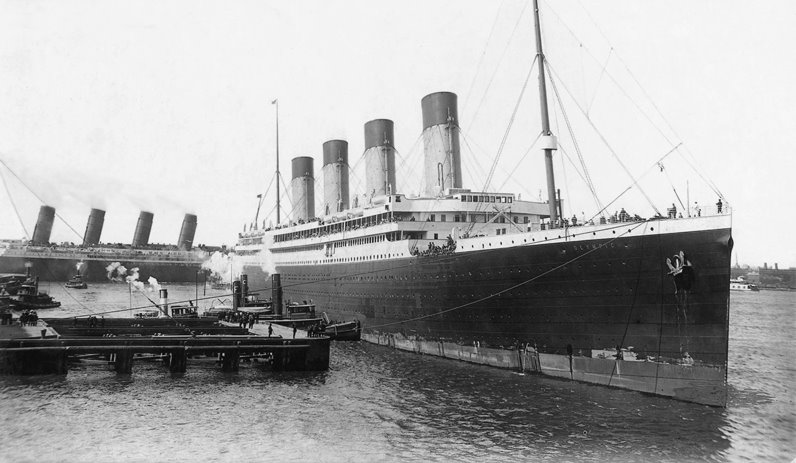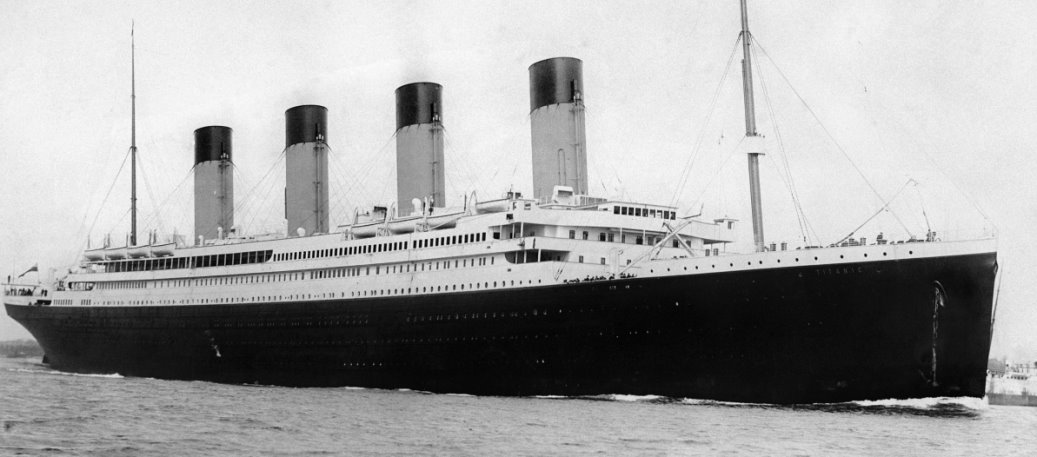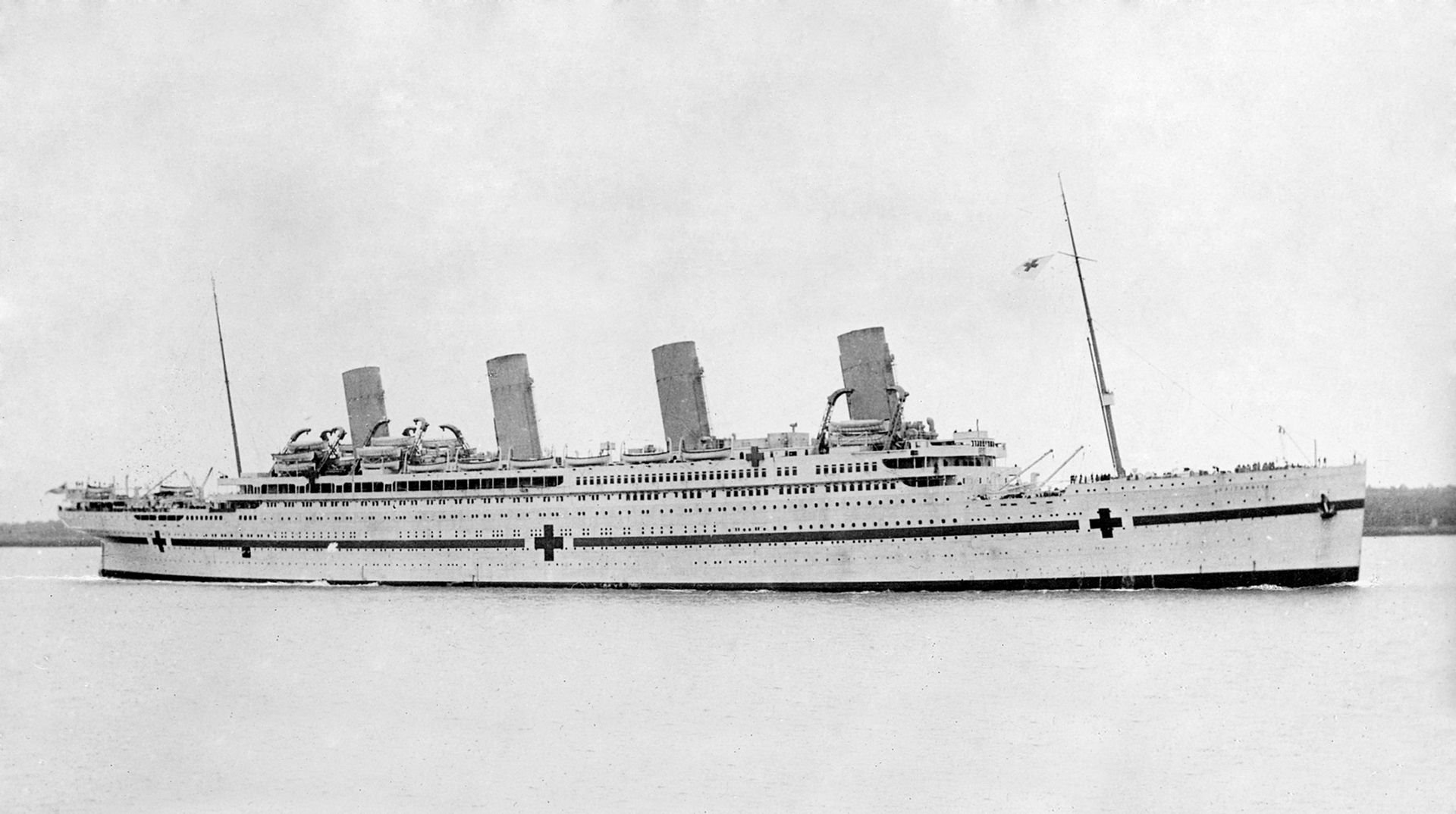The Olympic-class ocean liners were a trio of ocean liners named RMS Olympic, RMS Titanic, and
HMHS Britannic. Considered in the same class due to their similar deck plans, all three
ships were built by Harland and Wolff for operation under the White Star Line. They were intended to compete with Cunard's newest ocean liners,
the RMS Lusitania and RMS Mauretania. Designed by Harland and Wolff's designer, Thomas Andrews, White Star Line decided to compete with luxury
instead of speed.
RMS Olympic

RMS Olympic was the first of the Olympic-class ocean liners, hence the name. Given the shipyard number 400, Harland and Wolff set to work
and RMS Olympic was launched in October of 1910. RMS Olympic embarked on her maiden voyage June 14th, 1911, and she was in operation until
January of 1935. Her final fate was to be scrapped.
Notable Events in History:
- Collided with HMS Hawke - The damage was able to be patched up until RMS Olympic could
return to Belfast for repairs. These repairs would delay RMS Titanic's maiden voyage.
- Sinking of RMS Titanic - RMS Olympic recieved the distress signal from RMS Titanic the night of April 14, 1912. Unfortunately,
RMS Olympic was too far away to be of any assistance to survivors.
- WWI - After being fitted for troopship operation and painted in dazzle camouflage, HMT
Olympic was one of the most successful ships during war time. Quick and agile, she gained the nickname "Old Reliable". She even sank
German U-boat U-103.
- Post WWI - RMS Olympic was refitted for transatlantic operation and business was as usual.
| Specifications |
| Tonnage |
45,324 GRT (initial) |
| Displacement |
52,067 tons |
| Length |
882 ft 9 in |
| Height |
175 ft |
| Maximum speed |
24.2 knots |
| Total capacity |
3,385 (final) |
RMS Titanic

The second of the Olympic-class ocean liner trio, RMS Titanic was given shipyard number 401. In construction during the beginnings of
RMS Olympic's career, the two ocean liners were able to be spotted side by side in the shipyard. After launching in May of 1911, RMS Titanic
was fitted for transatlantic service and embarked on her maiden voyage on April 10th, 1912. She was in operation until April 14th, 1912; her
final fate was sinking in the North Atlantic Ocean due to striking an iceberg.
Notable Events in History:

well... the rest is history...
anyway...
| Specifications |
| Tonnage |
46,329 GRT |
| Displacement |
52,310 tons |
| Length |
882 ft 9 in |
| Height |
175 ft |
| Maximum speed |
23 knots |
| Total capacity |
3,327 |
HMHS Britannic

The last Olympic-class ocean liner was most famously known as HMHS Britannic. Originally named RMS Gigantic, she was launched in February 1914
as RMS Britannic. Due to delays in fitting, RMS Britannic's maiden voyage was delayed until spring of 1915. However, WWI broke out and
RMS Britannic was commissioned for military service. Refitted, renamed, and repainted to the HMHS Britannic, she set out to serve as a hospital
ship and transport for wounded soldiers. HMHS Britannic was in operation until November 21st, 1916; her final fate was sinking in the Aegean Sea
due to striking a mine.
Notable Events in History:
HMHS Britannic's career was fairly uneventful, compared to the others'.

| Specifications |
| Tonnage |
48,158 GRT |
| Displacement |
53,200 tons |
| Length |
882 ft 9 in |
| Height |
175 ft |
| Maximum speed |
23 knots |
| Total capacity |
3,309 |




